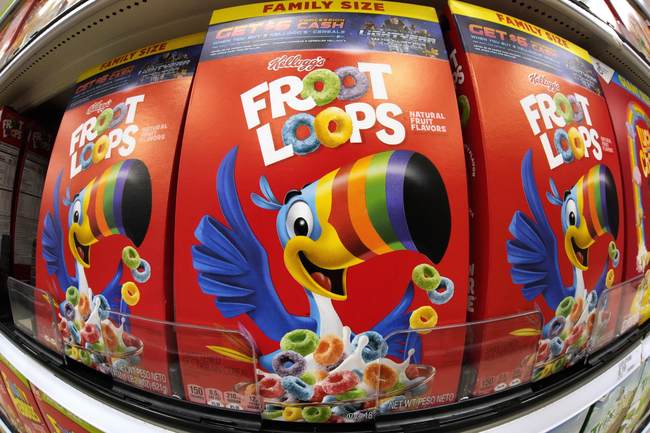
The White House today announced a massive tally of wins when it comes to food ingredients:
- Steak & Shake moved to 100% all-natural beef tallow and replaced its “buttery blend,” which contained seed oils, with 100% Grade A Wisconsin butter.
- McCormick announced it will drop certain food dyes from its products.
- PepsiCo announced it will remove artificial ingredients from popular food items — including Lay’s and Tostitos chips — by the end of the year.
- In-N-Out announced it will remove synthetic food dyes and artificial flavors from its menu items, and also transitioned to 100% beef tallow.
- Tyson Foods eliminated synthetic dyes in its food products.
- Mars removed titanium dioxide from its Skittles product.
- Sam’s Club committed to removing 40 harmful ingredients — including artificial colors, additives, dyes, and high-fructose corn syrup — from its private-label products.
- Kraft-Heinz announced it will remove artificial dyes from its U.S. products.
- General Mills announced it will remove artificial dyes from its U.S. cereals and all foods served in K-12 schools.
- Nestlé announced it will remove all petroleum-based food dyes from its food and beverage products.
- Conagra Foods announced it will remove certain color additives from its frozen products, no longer offer products with artificial dyes in K-12 schools, and stop using artificial dyes in the manufacturing of its products.
- JM Smucker announced it will remove synthetic colors from its consumer food products.
- Hershey announced it will remove synthetic dyes from its snacks.
- Consumer Brands announced it will urge its members to remove artificial colors in food and beverage products served in schools.
This list represents many of the major players in the food industry, including a number that produce foods primarily consumed by children.
Artificial colors in foods have been linked to a number of behavioral issues in children, including hyperactivity, irritability, memory problems, restlessness, and volatile moods, according to Henry Ford Health.
While it’s true that there’s no single gold-standard study proving that food dyes directly cause behavioral problems, the evidence continues to mount every year. With or without conclusive studies, parents have long been aware of the detrimental effects of certain food dyes on their children.
According to one study, artificial food dyes (AFC’s) have a “small but significant deleterious effect” on children’s behavior—and not just for kids with attention deficit hyperactivity disorder (ADHD). In fact, “AFCs appear to be more of a public health problem than an ADHD problem,” and they “seem to affect children regardless of whether or not they have ADHD, and they may have an aggregated effect on classroom climate if most children in the class suffer a small behavioral decrement with additive or synergistic effects.”
And from The Ohio State University,
The average person in the United States drinks and eats five times as much food dye today compared to what was consumed in 1955. In cereals, frostings, candy and even some packaged salmon, we eat food dyes. And we drink them in some soft drinks and sports drinks.
Researchers have linked food dyes to three genes. One of those genes produces dopamine, the feel-good brain chemical that promotes focus and control over your impulses. The two other genes produce histamine, a chemical made in your body that causes you to feel alert. But too much histamine can bring on allergy symptoms.
Now, I liked the bright colors of Trix and Froot Loops as much as the next kid, but I’ve seen the detrimental effects on children in my own family. Once, in particular, exhibits marked behavioral issues anytime he ingests certain dyes. Unfortunately, Kellogg’s, which manufactures Froot Loops, isn’t on the list. The company had committed to removing artificial dyes from its cereals by 2018, but this hasn’t yet occurred. Kellogg’s has been the subject of protests by concerned parents and even an investigation by Texas Attorney General Ken Paxton into the company’s “health” claims, which may violate the state’s consumer protection laws.
I was shocked to learn that many of these food dyes are made from petroleum products.
Health and Human Services Secretary Robert F. Kennedy said in April, “For too long, some food producers have been feeding Americans petroleum-based chemicals without their knowledge or consent. These poisonous compounds offer no nutritional benefit and pose real, measurable dangers to our children’s health and development. That era is coming to an end. We’re restoring gold-standard science, applying common sense, and beginning to earn back the public’s trust. And we’re doing it by working with industry to get these toxic dyes out of the foods our families eat every day.”
FDA Commissioner Marty Makary also noted in April, “Today, the FDA is asking food companies to substitute petrochemical dyes with natural ingredients for American children as they already do in Europe and Canada. We have a new epidemic of childhood diabetes, obesity, depression, and ADHD. Given the growing concerns of doctors and parents about the potential role of petroleum-based food dyes, we should not be taking risks and do everything possible to safeguard the health of our children.”
The MAHA movement is growing across the country. We’re getting an extraordinary outpouring of cooperation from food companies who, without forced regulation, are standing up to remove harmful dyes and other non-nutritious ingredients from their foods. pic.twitter.com/24FcUO1Vik
— Secretary Kennedy (@SecKennedy) June 26, 2025
And that’s how it should be done — getting manufacturers to make changes voluntarily rather than siccing jackbooted federal bureaucrats on them. This is a major step in the ‘Make America Healthy’ movement that will undoubtedly be cheered by millions of American parents.
Want to see more informative content like this? Become a PJ Media VIP to directly support the work we do here. You can join today for just $1.60 per month! Use the promo code FIGHT to apply the discount at checkout. If you become a member today, you’ll immediately have access to our informative comments section. Hope to see you there!

















